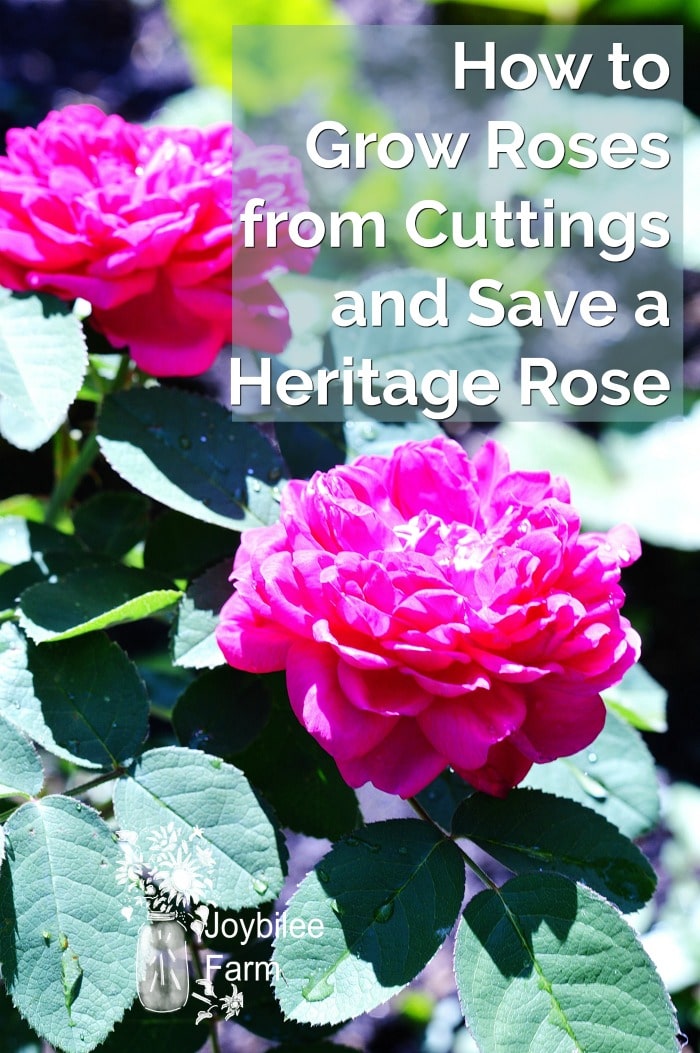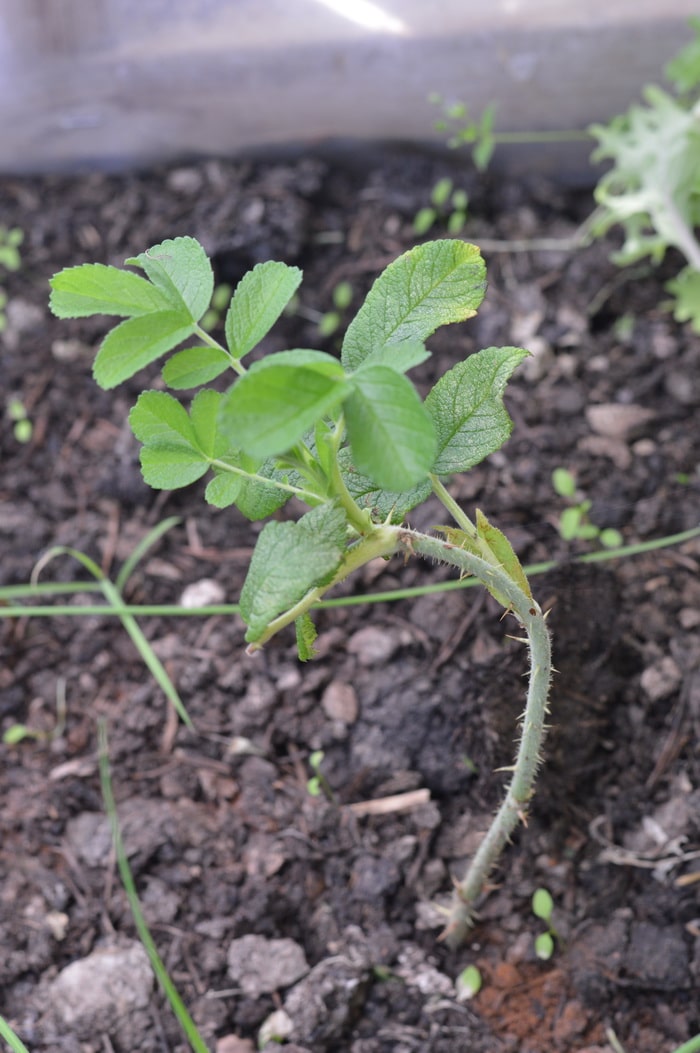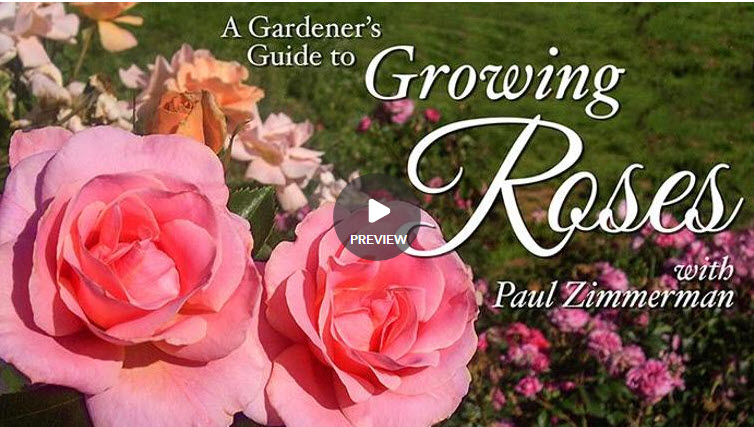Learning how to grow roses from cuttings will allow you to expand your rose garden, save a heritage rose, or preserve a wedding bouquet for the rose garden.
A reader recently asked how to grow roses from cuttings. She has an ancient rose bush that her late father grew. The bush needs to be moved from it’s current home and she wants to keep part of it to remember her father. Roses are one of the easier plants to propagate. Rose canes want to grow. Given the right conditions you can easily propagate several rose bushes from a single cutting.

Reasons to propagate roses from cuttings
- You have a rose bush with sentimental value and you want to keep it in the family
- A friend or family member has a rose bush that you would like to plant in your garden
- You want to create a rose garden from a few rose bushes
- You want to sell heritage roses at the farmer’s market
- You want to expand your rose garden
- You have a rose bouquet with special meaning and you want to grow a rose bush from it.
- Just to try to grow an new rose bush, because you can and it’s fun.
A caution: Make sure that the rose you intend to propagate is not a patented plant. Propagating patented roses is illegal.

When to take a rose cutting?
The ideal time to propagate a rose from a cutting is early spring but you can succeed later in the summer, too. Here in zone 3 the ideal time to take a rose cutting for propagating roses is late May or Early June. You want to pick a time when you have at least 6 weeks before your first frost. But it’s not so hot that your plant shrivels before the it has grown new roots. If you live further South, where summers are sweltering, you’ll want to take your cuttings earlier in the spring.
How to grow roses from cuttings:
Follow these steps for assured success as you learn how to grow roses from cuttings. Start at least 4 stems — 2 per pot for every 1 rose bush you want. The success rate in spring is usually very good. Later in the year, it can be difficult to root a rose cutting but it’s worth a try.
- Begin with a semi-hardwood length of rose cane — about 8 inches long. A semi-hardwood cutting is still flexible but it is no longer green.
- Cut it at an angle just below a leaf junction in the semi-hard wood. This is usually about 8 inches or so below the tip. Using a glove remove the leaves and thorns from the bottom 4 inches of the stem.
- Roll or dip in cinnamon powder which is a natural rooting hormone and fungicide. Push into the soil in a pot with damp soil. Your cutting will be 4 inches below the soil and about 4 inches above the soil.
- Clip off 1/2 of the leaves so that you have literally half leaves at the top. You’ll want to leave at least 5 to 7 half leaves to feed the plant while the roots are growing.
- Add a label to the pot with permanent marker. If you are starting several plants you want to know which rose each plant is.
- Put the pot in the shade or on your deck or in a shade house. This is important. Bright sunlight at this point will stress the cutting and your cutting will die.
- Cover the whole thing with that big glass pickle jar or a wide mouth quart Mason jar to hold in moisture. You could also use a plastic milk carton with the bottom cut off and the cap removed for ventilation. You are making a cloche, to protect your cutting from drying out.
- Water the soil around your rose cutting to keep it damp but not saturated. Be sure the pots you choose have good drainage. Water regularly to keep the soil damp.
Protect the cuttings from frost for the 6 weeks it takes to get roots and shoots. Don’t plant it out in the ground until next year — but protect the plant this winter.

6 weeks after pushing the semi-hardwood cutting into the soil, there is new growth. This tender growth needs protection from winter wind to keep it from drying out.
It takes 4 to 6 weeks to grow roots and begin the top growth when you try to grow roses from cuttings. You’ll know it worked if after 4 weeks you tug gently on the stem and it has some resistance. You will be assured of success when the top sends up new growth. This usually takes about 3 weeks after the root system is established before you see new leaves. Once you see them you know you’ve been successful. Remove the cloche as soon as you see new top growth on your cutting.
Provide some winter protection the first winter to protect the tender shoots. A cloche or greenhouse can offer protection from drying winter winds. If you have reliable snow cover that will protect the young plant from wind and cold damage.
Once your rose cutting is ready to plant out into it’s permanent garden home, you’ll want to check out these tips from growing roses organically, so that you can avoid the overuse of chemicals in your garden.
Learn more about propagating roses
The Craftsy course, The Gardeners’ Guide to Growing Roses will show you how to plant and care for modern shrub roses and heritage roses in your home garden. Learn from rosarian Paul Zimmerman and get tips for growing roses organically. This course was fun, entertaining, and very informative. Paul talks about the cool thing he discovered when he skipped spraying for aphids in his rose garden. When you learn this trick you’ll have healthier roses, even when your neighbors are fighting thrips and aphids.
You can purchase the course from Craftsy or watch the course as part of your Craftsy membership. You can even watch the class for free during your 7 day free Craftsy trial.
I bought an annual Craftsy membership last winter, and use it to gain gardening tips, photography, and cooking expertise. Better than Netflix, a membership in Craftsy gives you unlimited classes and projects.




I love reading your posts. You have a lot of information to share and I really appreciate it.
TP